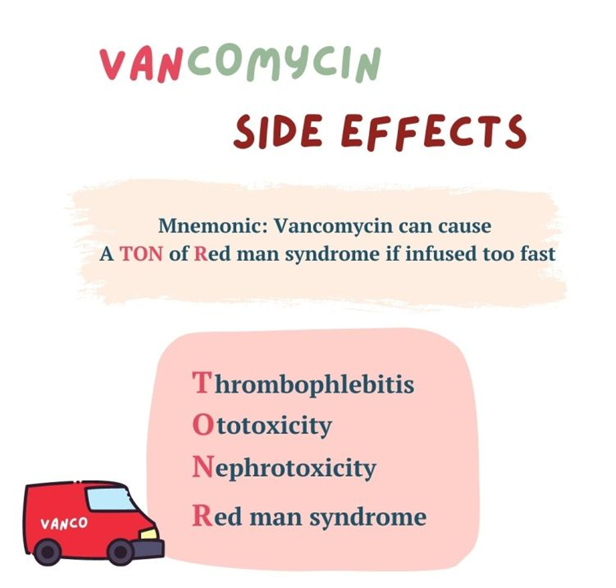The nurse is discussing treatment for a superinfection with a client and family members. The family asks the nurse what a superinfection is. What is the best response by the nurse?
An infection that is difficult to treat
An infection caused by a weakened immune system
A secondary infection that occurs when microorganisms normally present in the body are killed by the drug
A drug resistant infection
The Correct Answer is C
A. An infection that is difficult to treat:
This choice describes a challenging infection but does not specifically capture the concept of a superinfection. While superinfections can indeed be difficult to treat, they are defined more specifically as secondary infections that occur due to disruption of the normal microbial flora during the treatment of an initial infection.
B. An infection caused by a weakened immune system:
This choice describes an infection that occurs due to a compromised or weakened immune system, which can indeed increase the risk of developing infections, including superinfections. However, it does not fully encompass the definition of a superinfection, which specifically involves the overgrowth of opportunistic pathogens after the disruption of normal microbial flora by antimicrobial treatment.
C. A secondary infection that occurs when microorganisms normally present in the body are killed by the drug:
This choice accurately describes what a superinfection is. It highlights the key concept that a superinfection is a secondary infection that arises when antimicrobial treatment disrupts or kills the normal microbial flora of the body, allowing opportunistic pathogens to overgrow and cause infection.
D. A drug-resistant infection:
This choice describes an infection caused by microorganisms that are resistant to the effects of antimicrobial drugs. While drug resistance is a significant concern in healthcare, it does not specifically define a superinfection. Superinfections can involve drug-resistant microorganisms, but they are not solely characterized by drug resistance; rather, they are secondary infections resulting from the disruption of normal microbial flora during antimicrobial treatment.
Nursing Test Bank
Naxlex Comprehensive Predictor Exams
Related Questions
Correct Answer is C
Explanation
A. Discoloration of body fluids:
Vancomycin can cause discoloration of body fluids, particularly urine, resulting in a brownish discoloration. However, this is not caused by histamine release.
B. Ototoxicity:
Ototoxicity refers to damage to the inner ear structures leading to hearing loss or balance problems. While vancomycin can cause ototoxicity, it is not specifically associated with histamine release.
C. Red-man syndrome
Red-man syndrome, also known as red-neck syndrome or red-person syndrome, is a hypersensitivity reaction characterized by flushing of the skin, particularly the upper body and face, resembling a "red man." This reaction is typically associated with the rapid infusion of vancomycin and is caused by the release of histamine from mast cells and basophils. It is not an allergic reaction but rather a non-immunologic response to vancomycin.
D. Nephrotoxicity:
Nephrotoxicity refers to kidney damage caused by certain medications or toxins. While vancomycin can cause nephrotoxicity, it is not specifically associated with histamine release.

Correct Answer is B
Explanation
A. “It’s fine for me to become pregnant while taking this medication.”
This statement is incorrect. Tetracycline is known to have teratogenic effects, meaning it can harm the developing fetus if taken during pregnancy. Women of childbearing age should use effective contraception while taking tetracycline and avoid becoming pregnant during treatment.
B. “I will need to postpone my vacation at the beach until I finish this medication."
This statement demonstrates an understanding of the discharge instructions. Tetracycline can increase the risk of sunburn and photosensitivity reactions. Therefore, it's advisable for the client to avoid prolonged sun exposure, particularly during peak sunlight hours, and to use sun protection measures such as wearing protective clothing, using sunscreen, and avoiding tanning beds or sunlamps. Postponing a vacation at the beach until after finishing the medication is a prudent precaution to minimize the risk of sun-related side effects.
C. “I am so glad to be leaving today because I have an appointment at the tanning salon."
This statement is incorrect. Tetracycline can increase the risk of sunburn and photosensitivity reactions. Visiting a tanning salon while taking tetracycline can further increase the risk of skin damage and should be avoided.
D. "I will stop taking this medication as soon as I feel better.”
This statement is incorrect. It's important for the client to complete the full course of tetracycline as prescribed by their healthcare provider, even if they start to feel better before finishing the medication. Stopping the medication prematurely can lead to incomplete treatment and potential recurrence of the infection.
Whether you are a student looking to ace your exams or a practicing nurse seeking to enhance your expertise , our nursing education contents will empower you with the confidence and competence to make a difference in the lives of patients and become a respected leader in the healthcare field.
Visit Naxlex, invest in your future and unlock endless possibilities with our unparalleled nursing education contents today
Report Wrong Answer on the Current Question
Do you disagree with the answer? If yes, what is your expected answer? Explain.
Kindly be descriptive with the issue you are facing.
